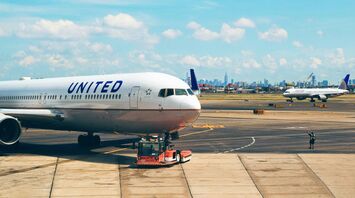Tips for Flying with Golf Clubs in the U.S.: A Traveler’s Guide

For golf enthusiasts, traveling with golf clubs can be as essential as packing a passport. Whether you're heading to a renowned golf destination or simply bringing your clubs along for a weekend getaway, navigating the process of flying with your golf gear can be tricky. Here’s a guide to help you transport your golf clubs smoothly across the U.S., ensuring they arrive safely and ready for the course.
Choose the Right Golf Travel Bag
The first step in ensuring your golf clubs arrive in one piece is investing in a high-quality golf travel bag. There are two main types to consider: soft-sided and hard-sided cases. Soft-sided bags are generally lighter and easier to handle, often with additional pockets for shoes and other accessories. Hard-sided cases, on the other hand, offer superior protection against rough handling and are ideal for long-haul flights or when traveling with expensive equipment. Whichever you choose, make sure it has ample padding and a sturdy structure to protect your clubs.
Know the Airline Policies
Before you book your flight, it’s important to check the specific policies of the airline regarding sports equipment, as rules and fees can vary. Most U.S. airlines treat golf clubs as standard checked baggage, but some may charge additional fees, especially if your bag exceeds weight limits. Airlines like Southwest allow golf bags as part of their free checked baggage allowance, while others like Spirit or Frontier may charge extra. Familiarizing yourself with these policies can help you avoid unexpected costs and ensure your clubs meet the airline's size and weight restrictions.
Pack Your Clubs Securely
Properly packing your golf clubs is crucial to prevent damage during transit. Start by removing the clubheads (if possible) and storing them separately in the bag’s pockets to reduce the risk of breakage. Use a stiff arm, a telescoping rod that fits into your bag, to absorb any impact that might otherwise damage your clubs. Wrap the shafts in towels or bubble wrap for added cushioning, and secure everything tightly to prevent movement inside the bag. Finally, lock the zippers to keep the bag securely closed during handling.
Consider Travel Insurance
Given the value of golf clubs, it’s wise to consider purchasing travel insurance that covers sports equipment. While airlines do offer some compensation for damaged or lost luggage, the reimbursement limits may not fully cover the cost of high-end golf gear. Travel insurance can provide peace of mind by offering additional protection, ensuring that any potential mishaps don’t ruin your golfing plans.
Arrive Early and Plan for Extra Time
When flying with golf clubs, it's advisable to arrive at the airport earlier than usual. Checking in oversized luggage can take extra time, and you may need to visit a special counter or area to drop off your golf bag. Allowing for this extra time will help reduce stress and ensure that your clubs are handled properly by airline staff.
Use a Tracking Device
For added security, consider placing a tracking device, like an Apple AirTag or Tile, in your golf bag. This allows you to monitor the location of your clubs throughout your journey and quickly locate them if they are misplaced. While most bags arrive safely, having this backup can provide reassurance, especially when traveling with valuable equipment.



















